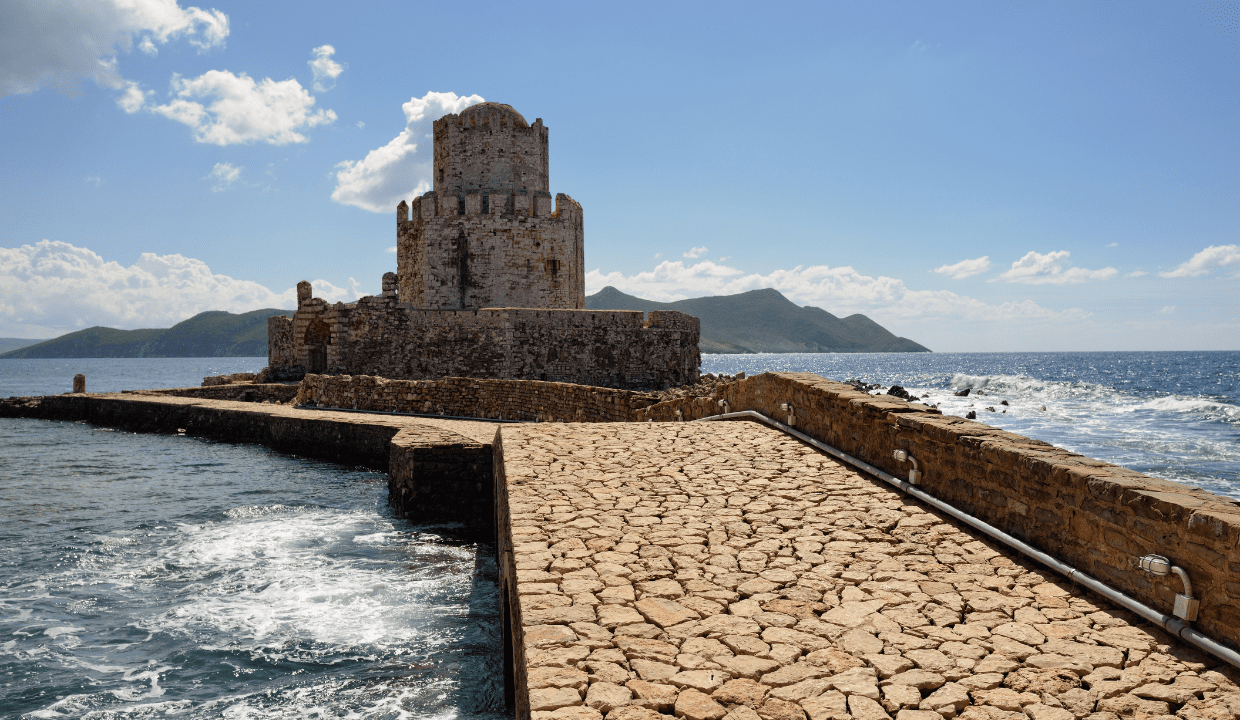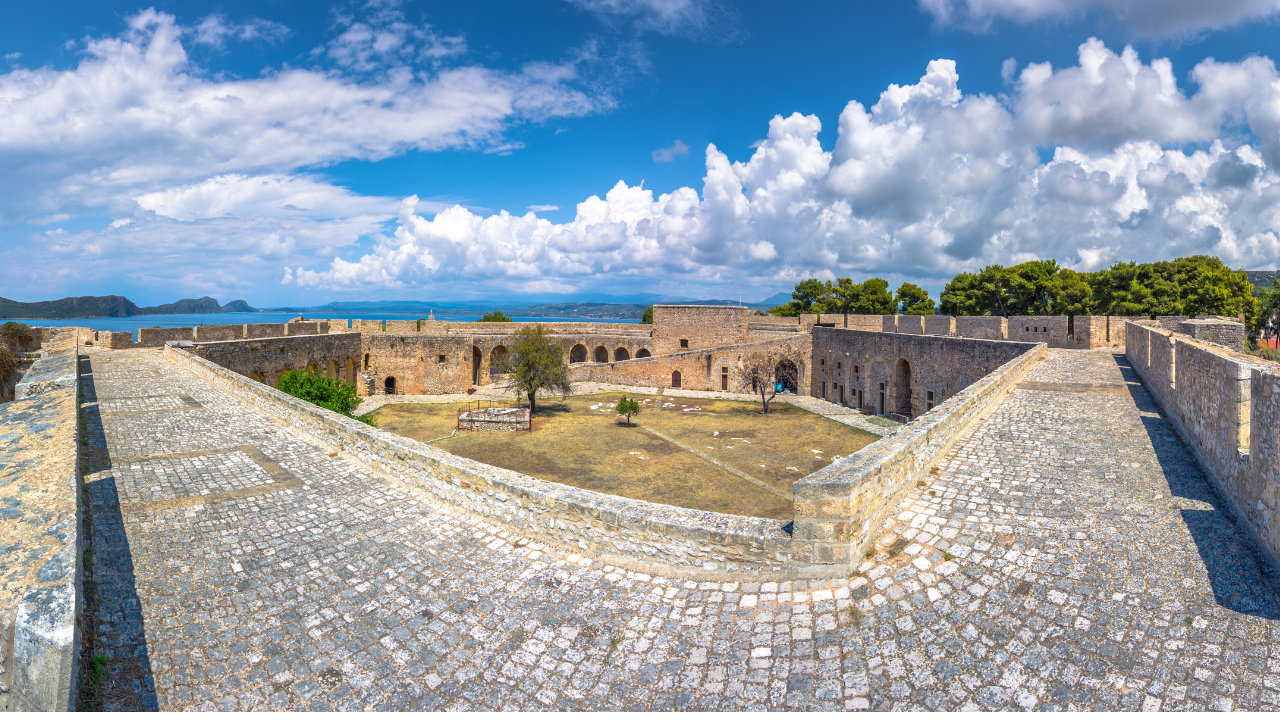
The castles of Messinia are among the most remarkable remnants of medieval Greece. Rising proudly from rocky outcrops and coastal cliffs, they tell stories of Byzantines, Venetians, Ottomans, and Greek revolutionaries who shaped this region’s history. These fortresses were not only built for defense but also served as administrative centers, residences, and symbols of power.
Today, these stone guardians stand as monuments of resilience, inviting travelers to walk their ramparts, enjoy breathtaking sea views, and step back in time. Let’s explore the most iconic castles of Messinia.
🏰 1. The Castle of Kalamata
Perched on a low hill above the river Nedon, the Castle of Kalamata dates back to the Byzantine period but was reconstructed in the 13th century by the Frankish prince Villehardouinos.
Its thick walls, water cisterns, and church ruins tell tales of its defensive role, while the sweeping views of modern Kalamata showcase the contrast between past and present. Although damaged during Ibrahim Pasha’s campaign in 1825, it remains one of the city’s proudest landmarks.
🏰 2. The Castle of Koroni
At the southwestern tip of Messinia lies the Castle of Koroni, a Venetian masterpiece overlooking the Ionian Sea. Built on the site of an ancient acropolis mentioned by Homer, this fortress flourished under the Venetians in the 13th century.
Its fortifications were expanded to withstand Turkish sieges, and its strategic port brought wealth and prestige. Liberated in 1828 after the Battle of Navarino, Koroni Castle still enchants visitors with its panoramic views, Byzantine churches, and Venetian arches.
🏰 3. The Castle of Methoni
Perhaps the most impressive of all, the Castle of Methoni occupies a rocky peninsula jutting into the sea, separated from land by a wide moat. Built by the Venetians in the early 13th century, it became a crucial stronghold against pirates and Ottoman forces.
Visitors today can explore its massive gates, battlements, and the iconic Bourtzi Tower, which rises from the sea like a stone crown. History lovers will appreciate its role during the Greek Revolution and its use as Ibrahim Pasha’s headquarters in 1825.

🏰 4. Niokastro of Pylos
The Castle of Pylos (Niokastro) was built by the Ottomans in 1573 to guard Navarino Bay. Later occupied by Venetians and Turks, it was finally liberated in 1828.
Inside, you’ll find the Church of the Transfiguration, once a mosque, and the Museum of Underwater Antiquities, housed in General Maison’s building. Its walls provide stunning views of the bay, where the decisive Battle of Navarino took place a turning point in Greek independence.
🏰 5. Palaiokastro (Old Navarino Castle)
High above the Gialova Lagoon, the ruins of Palaiokastro command one of the most dramatic views in Messinia. Built in 1278 by the French noble Nicholas II of Saint Omer, it later witnessed fierce battles, including the legendary naval clash of 1827.
Though partly in ruins, its atmosphere is unmatched especially at sunset when the Ionian Sea glows beneath its ancient stones.
🌟 Why Visit the Castles of Messinia?
-
To walk through centuries of history, from the Mycenaeans to the Venetians and beyond.
-
To enjoy stunning landscapes where fortresses meet sea and mountain.
-
To connect with the spirit of Greek independence.
-
To capture unforgettable photos of ruins, sunsets, and coastlines.
The castles of Messinia aren’t just historical monuments they’re gateways to understanding the soul of the Peloponnese.
🛏️ Where to Stay – Studio Centro, Pylos
After your castle-hopping adventures, return to modern comfort at Studio Centro in Pylos.
✨ Why Studio Centro?
-
Stylish, fully equipped apartment in the heart of Pylos.
-
Close to Niokastro Castle, Voidokilia Beach, and Gialova Lagoon.
-
Ideal base for exploring Methoni, Koroni, and Pylos.
👉 Stay at Studio Centro and book now for your getaway.
